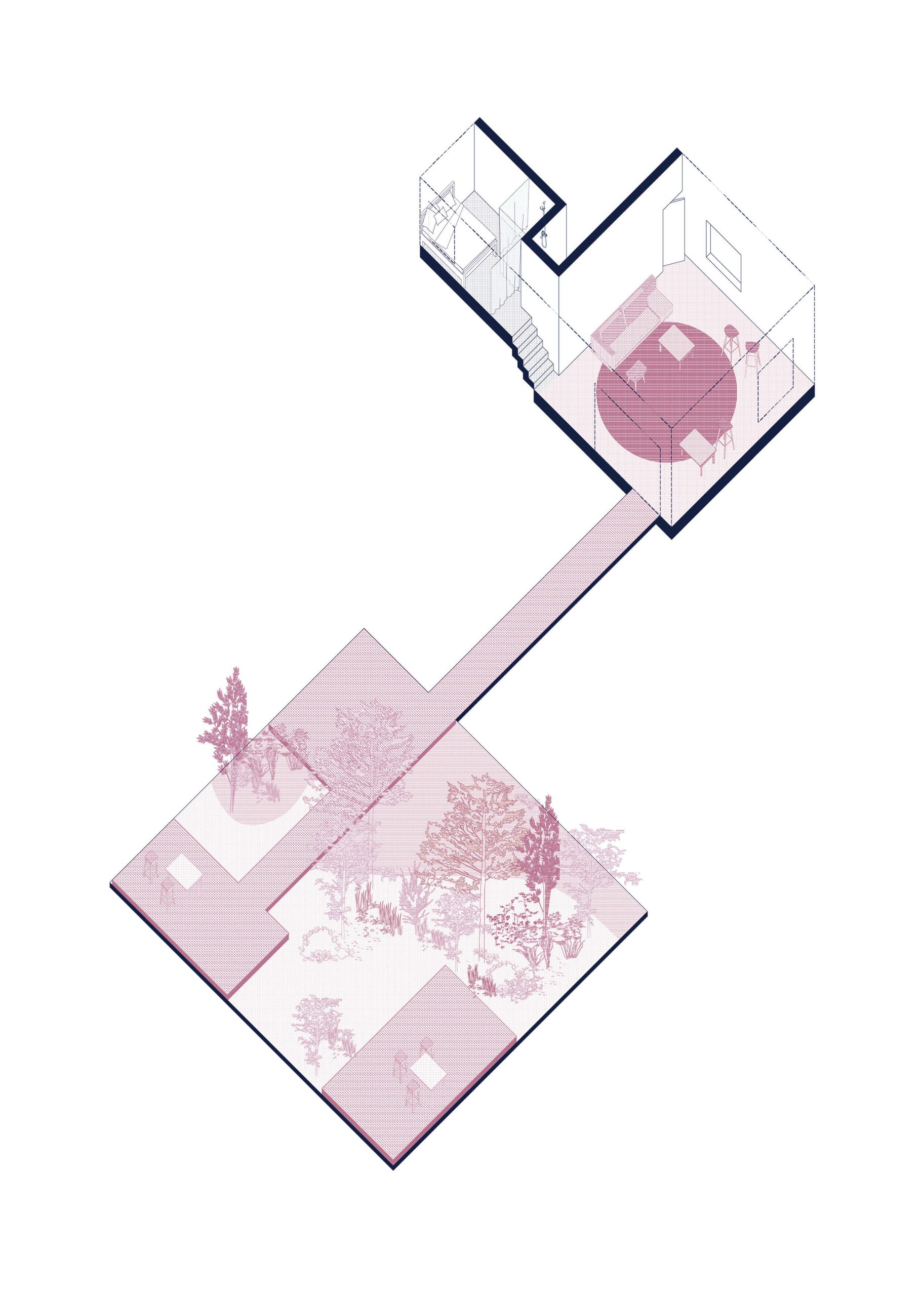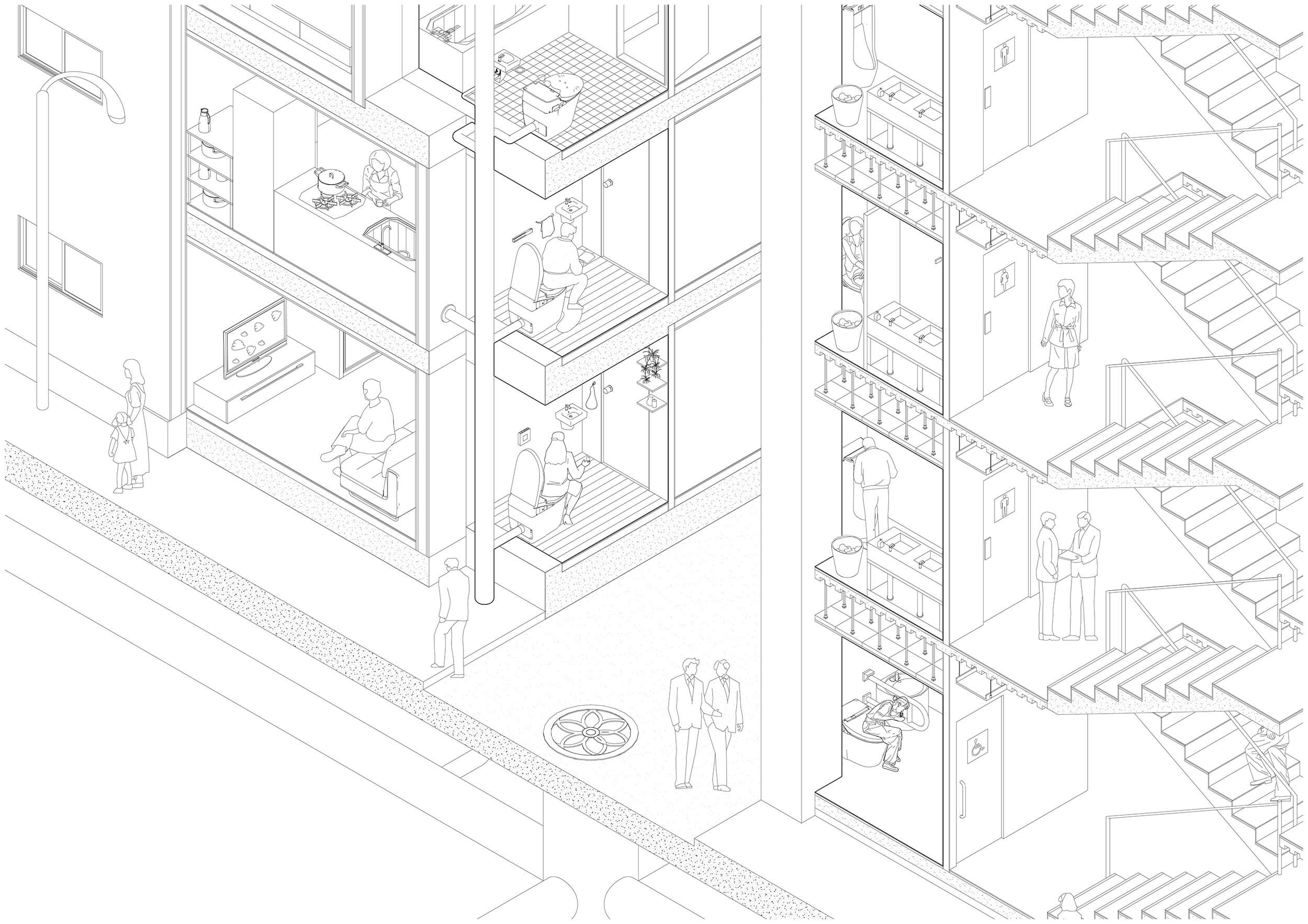TETRIS TERRACE
The block including the site locates right in the south from Jiyugaoka Station. The site con- sists of two types of void following our classify; courtyard type and rooftop type.
The former is in the middle of the block and now used as a parking lot, having potential to be built something. The latter is rooftops of surrounding building which are left unused yet have various places with different level.
In addition, the site is in between two areas, commercial and residential. So it would fit to the program of accommodation.
We made unused rooftops parts of architec- ture. Then we built a volume in the courtyard type void. Depending on the charcteristics of the rooftop terraces, we deformed daily life and gave a specificities to 7 each rooms.
In this way, we formed each room as a set of a inside room and a rooftop terrace. In order to make the architecture a benchmark, we designed a rectangular volume of reignforced concrete structure with minimal facade, yet complex with different form of rooms and a staircase inside. The architecure hence looks seemingly very simple, however, consists of different characters of rooms with full of un- predictability.
Student: Junho Kim
Toilet
The development of the toilet and the treatment of excrement in Japan are closely linked to a growing mechanization of the lavatory as a device and its progressive shift vis-à-vis the house from outdoors to indoors. In the Edo and early Meji Periods toilets were located at the edge of or outside the house. Conceived as a squat-latrine system, made out of wood, it was adapted for the easy collection of the excrement, which was then used as fertilizer. Between the World Wars, new systems, new materials, and even new toilets (for instance toilet bowls) were slowly introduced, while the collection of sewage became more and more mechanized, with basket collection being successively replaced by trucks, then mobile vacuum-extraction units, and later still by a Western type of sewage system with pipes. In recent years the predominant European-based device has become hyper-Japanized, highly automated (including washing, drying, background noise, cleaning, disinfecting, etc.), and even described and praised as something kawaii (cute, adorable) in the public narrative.
Arbed
Machiya in Daita / Kazunari SAKAMOTO
Laundry
The coin laundry is a space of negotiation between the intimacy of private life and the public realm. This negotiation happens at different scales: in the drums, shared and used by the various publics for the washing and drying of personal items; in the aisles of the laundry room, where ones clothes are deposited in full view of everybody else; in the laundry space itself, where strangers spend long moments together; or through the window frontage, where the laundry users are exposed to passers-by. These fragile relationships are most visible when the boundaries are trespassed, provoking shame, fear, shock, inappropriate curiosity, or even love.


